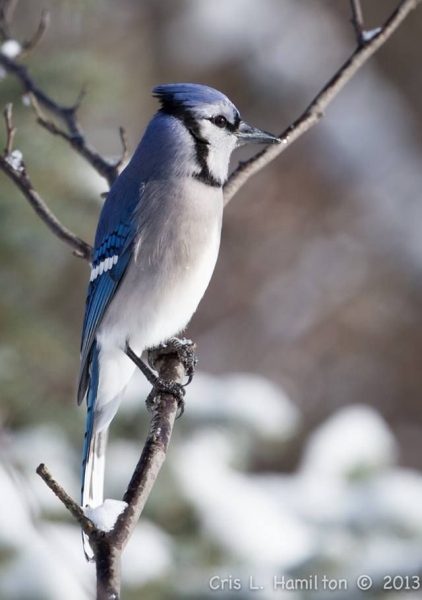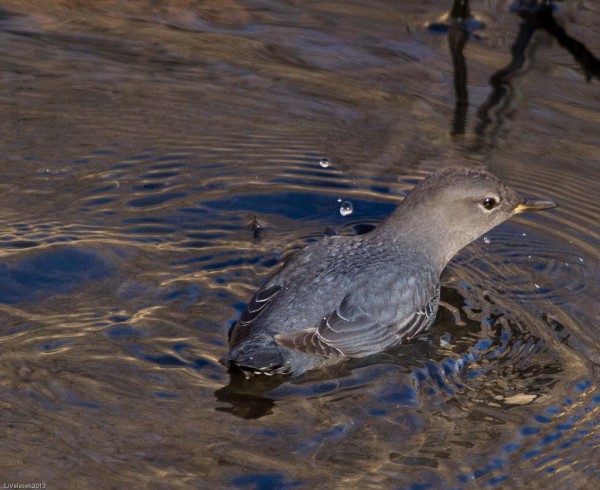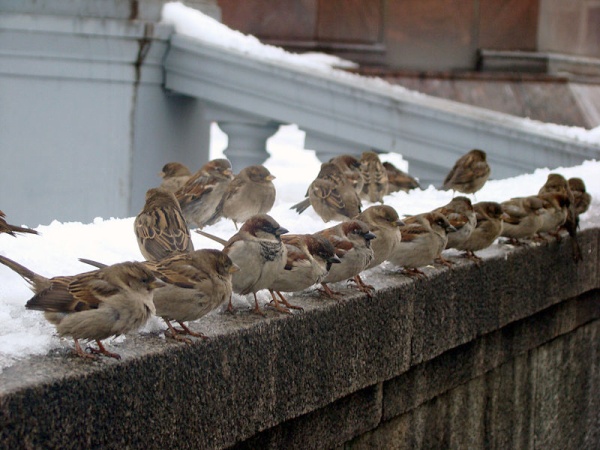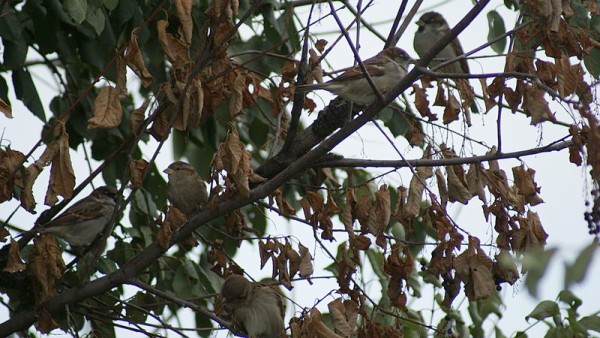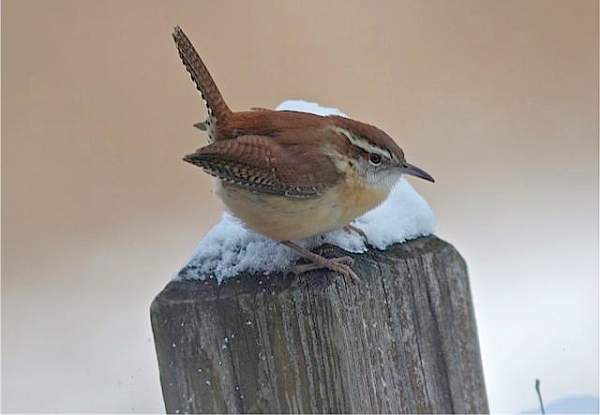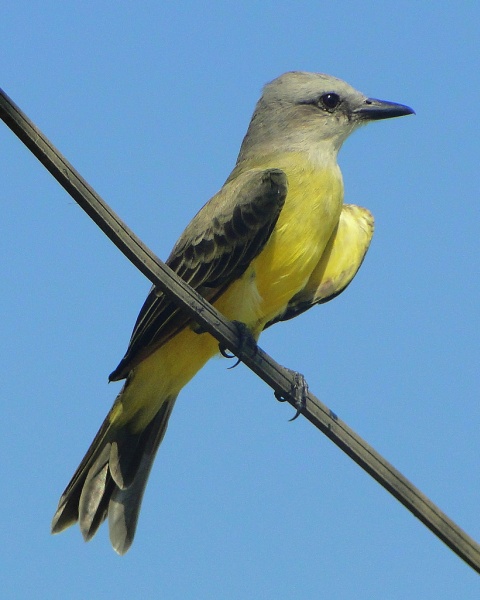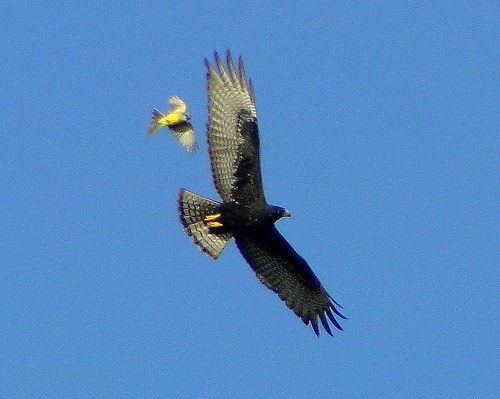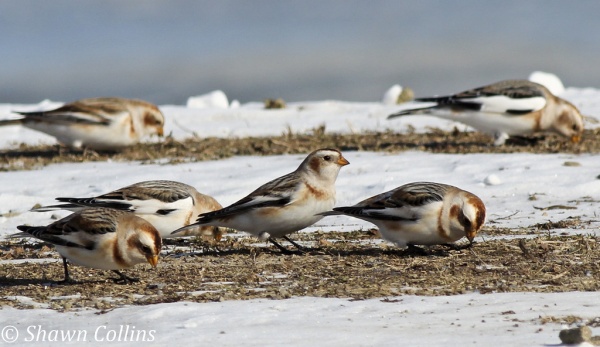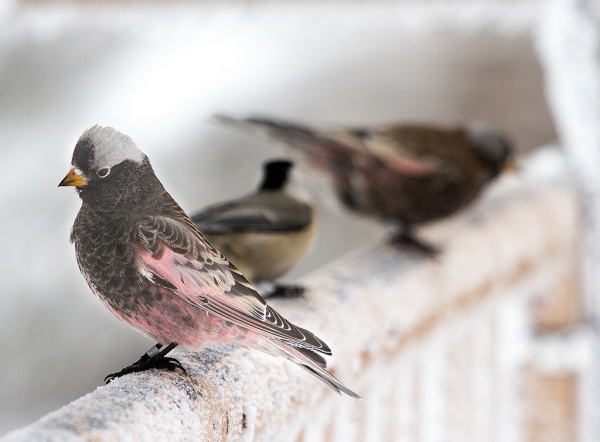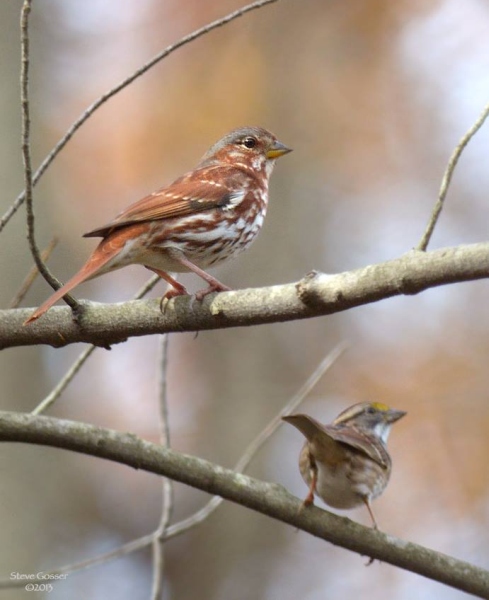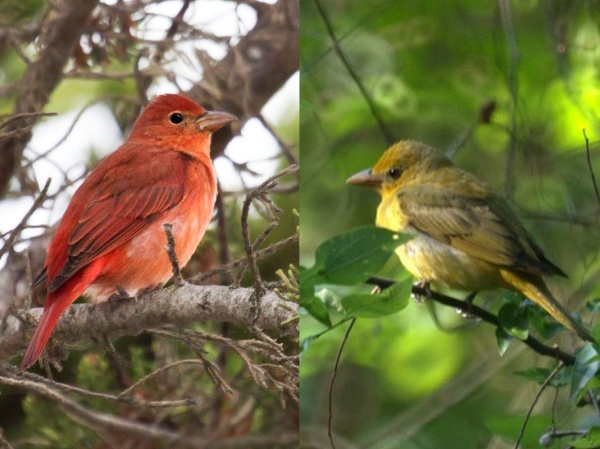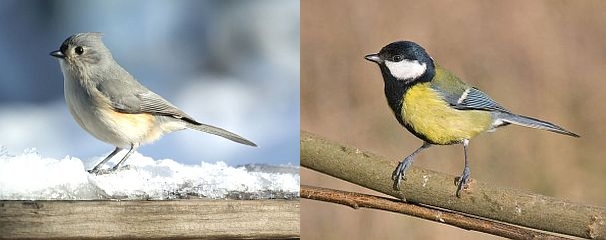
Here’s an interesting thought: Around the world there are birds with similar habitat and food requirements that are ecological equivalents to each other. Though they live on different continents they occupy similar niches. Sometimes they even look alike.
I was intrigued by this when I found a graphic on page 630 of Ornithology by Frank B. Gill showing three sets of equivalent birds from North America and Europe. Here they are:
Set #1. The tufted titmouse in North America (at left above) is an ecological equivalent to the great tit in Europe (at right).
All About Birds says the tufted titmouse prefers “eastern woodlands below 2,000 feet elevation, including deciduous and evergreen forests. Tufted titmice are also common visitors at feeders and can be found in backyards, parks, and orchards.”
Europe’s great tit prefers similar habitat. I wish our titmouse was as colorful.
Set #2. Our black-capped chickadee (at left below) is equivalent to Europe’s willow tit (at right).
Again according to All About Birds, “Black-capped chickadees may be found in any habitat that has trees or woody shrubs, from forests and woodlots to residential neighborhoods and parks, and sometimes weedy fields and cattail marshes. They frequently nest in birch or alder trees.”
In Europe, look for the willow tit in these habitats.
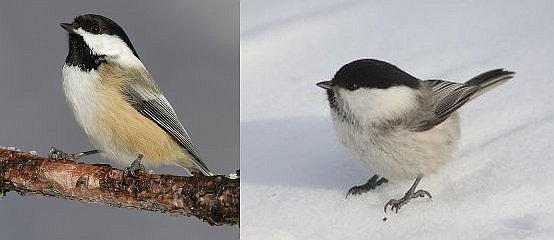
Set #3. The chestnut-backed chickadee of the Pacific Northwest (at left below) is equivalent to the coal tit in Europe (at right).
All About Birds says, “Chestnut-backed chickadees are found in dense coniferous and mixed coniferous forests of the Pacific Coast. You can also find them in shrubs, trees, and parks of cities, towns, and suburbs.”
The coal tit has similar habitat requirements in Europe and fills a wider niche in Ireland where competing marsh, willow and crested tits aren’t present.
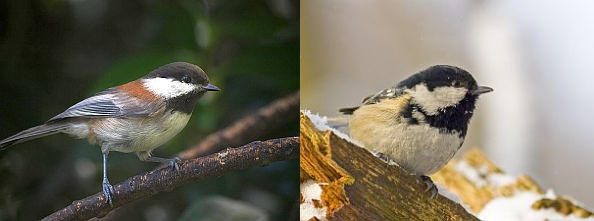
There are many more ecologically equivalent species. GrrlScientsist shows us Kenya’s ecological equivalent of the red-tailed hawk at this link.
Can you think of other bird equivalents?
(photos from Wikimedia Commons. Click on these links to see the originals: tufted titmouse, great tit, black-capped chickadee, willow tit, chestnut-backed chickadee, coal tit.
Today’s Tenth Page is inspired by page 630 of Ornithology by Frank B. Gill.)
